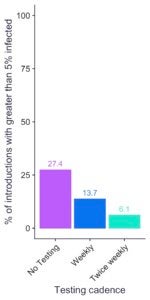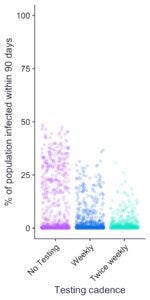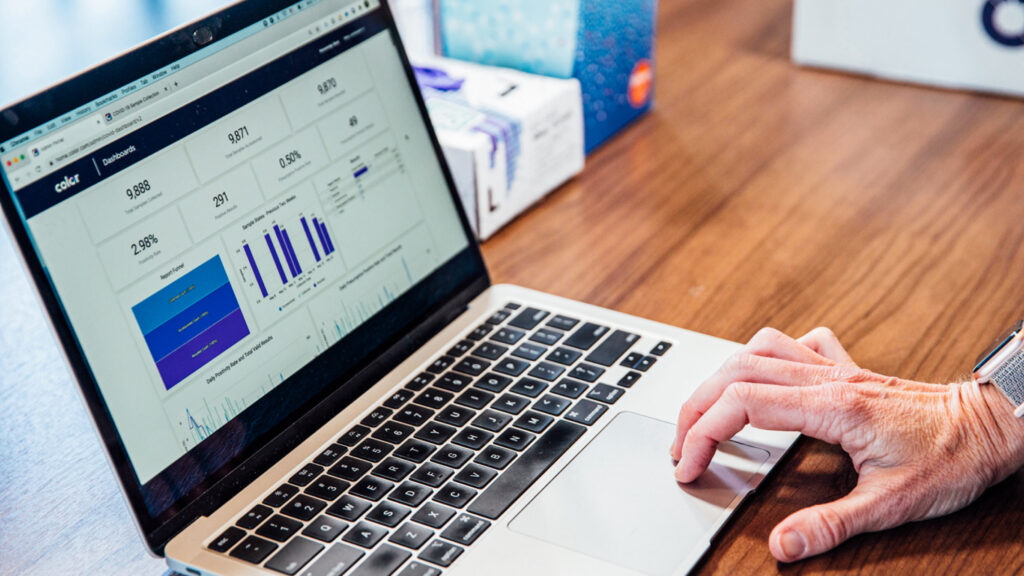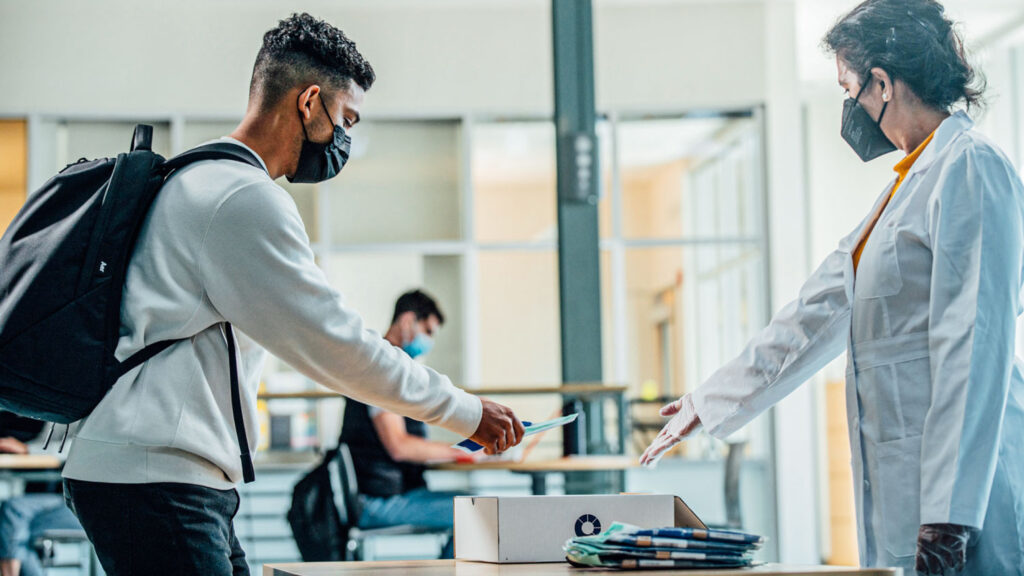News & Articles
Key considerations for workplace risk mitigation after the COVID-19 Omicron Variant
Caroline Savello

Over the past two months, we have experienced the largest spike in COVID-19 cases to date.1 This new wave, driven by the Omicron variant of SARS-CoV-2, presents a new set of challenges for organizations as they balance business goals with the safety needs. The question is not if employers should bring individuals back to the workplace, but rather how they can do this while reducing the likelihood and size of a COVID-19 outbreak.
To help organizations design an effective workplace safety strategy, we recently updated our SEIRS+ epidemiological modeling tool to include Omicron variant-specific considerations. The tool showcases how a combination of 1) frequent proactive testing, 2) adoption of vaccinations and boosters and 3) the use of non-pharmaceutical interventions (such as masking and social distancing) can reduce the likelihood of an outbreak in a workplace.
Here’s an example of the model in action:
For many workplaces in the United States, the average adoption of boosters is in the 40% range.2 In addition, most workplaces are unable to enforce strict social distancing or intensive mask wearing compliance (which makes R0 close to ~6). In this environment, deploying weekly testing can significantly reduce the likelihood of workplace-related transmission.
In fact, our model shows that weekly testing of all employees in the workplace can reduce the likelihood of a large workplace outbreak (>5% of pop. infected) by ~50% as compared to no testing.


This means that, as employers reexamine their workplace protocols and relax COVID-era standards, ongoing weekly testing of the workforce can minimize the likelihood of outbreaks with their population.
What factors have the greatest impact in reducing outbreaks and transmission?
Proactive Testing
Proactive testing is a useful outbreak mitigation tool because it identifies individuals (regardless of symptoms) within a population who are infected with SARS-CoV-2, and ensures they are pulled out of the population before they are able to transmit to others. Both antigen testing and molecular testing (with next-day turnaround time) can be used. The most impactful factor is to test frequently and to test everyone. The more frequently proactive testing is deployed, the more effective it is at cutting chains of transmission. Most workplaces should consider implementing a weekly or twice-weekly proactive testing strategy.
Booster adoption
One of the unique (and unfortunate) properties of the Omicron variant is that 2-dose vaccination and natural immunity from prior COVID-19 infection do not adequately protect against Omicron infection. Booster shots have been shown to reduce infection and transmission rates however. As such, booster adoption within a workplace becomes an important factor for workplace-related transmission. Currently, ~40% of Americans have received a 3rd shot booster.2 As the adoption of the 3rd shot booster goes up, it will help drive down the likelihood of an outbreak.
Non-pharmaceutical interventions (NPIs)
NPIs, such as masking and social distancing, can help reduce the likelihood of a person-to-person transmission within a population. With the onset of Omicron, some of the NPIs adopted in the early pandemic days are no longer as effective. Specifically, cloth masks are not very effective against Omicron (although, any mask is still better than no mask at all). Surgical masks, or even higher graded masks such as KN95 masks, will be needed to be able to significantly reduce the likelihood of Omicron transmission.
How should I use the Color Omicron workplace modeling tool?
Every employer has slightly different needs. Our Omicron workplace modeling tool allows you to set the parameters for booster adoption and NPI adoption to levels that are realistic for you. From there, the tool shows how the impact of proactive testing can change the likelihood of an Omicron outbreak within your population.
In this current phase of this pandemic, it can sometimes feel hopeless for an employer to think about how to design an effective workplace safety strategy. The good news is, for almost all populations, there is some combination of proactive testing, booster adoption and mask-wearing that can be implemented to effectively manage your outbreak risk.
References
- Lukpat A, Cahalan S. Covid Updates: Omicron Drives New U.S. Virus Cases to a Daily Record. The New York Times. https://www.nytimes.com/live/2021/12/29/world/omicron-covid-vaccine-tests. Published December 29, 2021. Accessed January 26, 2022.
- CDC. COVID data tracker. Centers for Disease Control and Prevention. Published March 28, 2020. Accessed January 26, 2022. https://covid.cdc.gov/covid-data-tracker/



